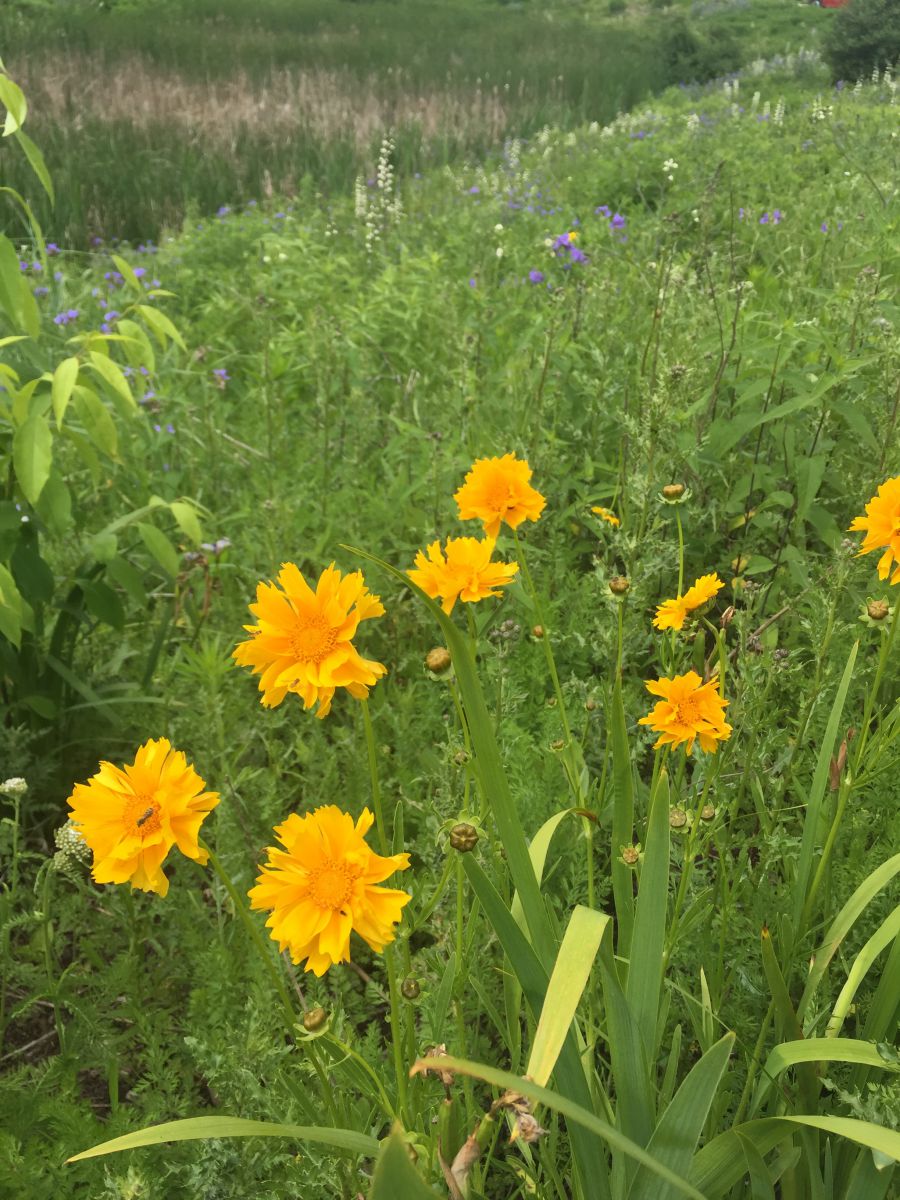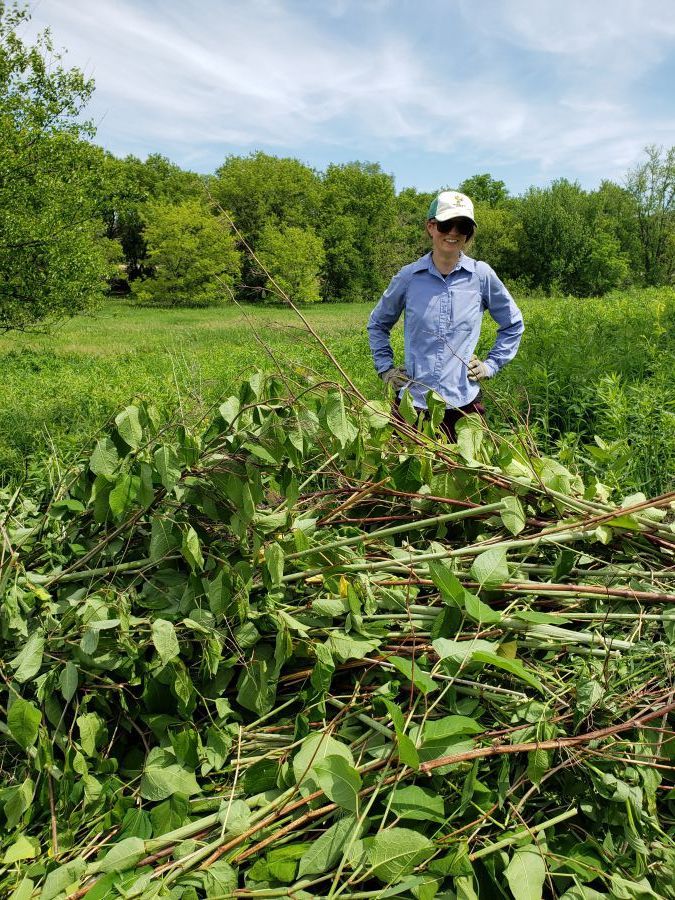Stormwater Land as Native Habitat
Only a fraction of historic native prairie and wetland land remains in Wisconsin; virtually none is found in continuously expanding urban areas. Incorporating native flora into stormwater drainage land provides a diversity of habitat to increasingly rare species including songbirds, pollinators, and other wildlife. In addition to the ecological benefits, native plant species aid in stormwater control. Native grasses and wildflowers have a very deep root system, unlike turf grass, that aids stormwater infiltration and prevents erosion. Native plants can also decrease the velocity of stormwater running through a system and act as a carbon sink.

Engineering staff may control invasive species and undesirable plants by spot mows or timed mows, hand digging or pulling, brush mowing or treating with an approved herbicide to give the native plants a chance to establish and flourish. In addition to controlling invasive species, native plants are promoted by sowing native seed, installing Native Vegetative Mat, or conducting prescribed burns.
In addition to native habitat in greenways and ponds, the Engineering Department promotes native plant use in the following programs:
- A number of pollinator plantings, though not directly located on stormwater drainage land, provide resources for wildlife in Madison’s urban space.
- During street reconstructs, residents have been given the option to add a Terrace Rain Garden to their property; these are planted with native plants.
- Engineering staff manage and promote natives species in over 30 City-owned rain gardens, which we proudly count toward the Madison’s 1,000 Rain Garden Goal.
- When appropriate, native vegetation is used to help shoreline stabilization on Madison’s lakes and waterways.
Managing for native plants is labor-intensive work. Engineering is proud to work with Operation Fresh Start (OFS) youth crews to increase native habitat. Additionally, Engineering offers the Conservation Training Program where trainees perform restoration field work on the City’s ponds, greenways and rain gardens.

